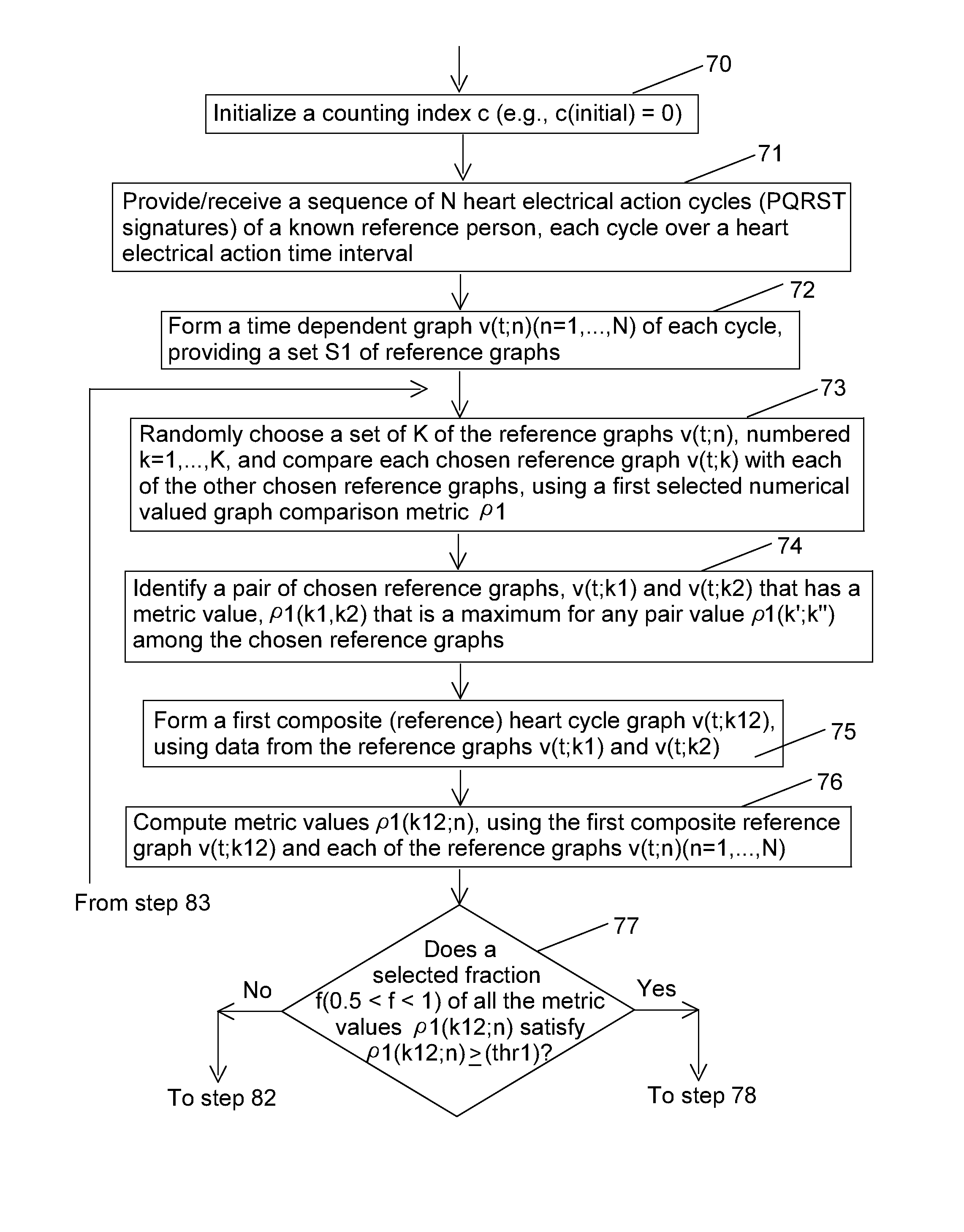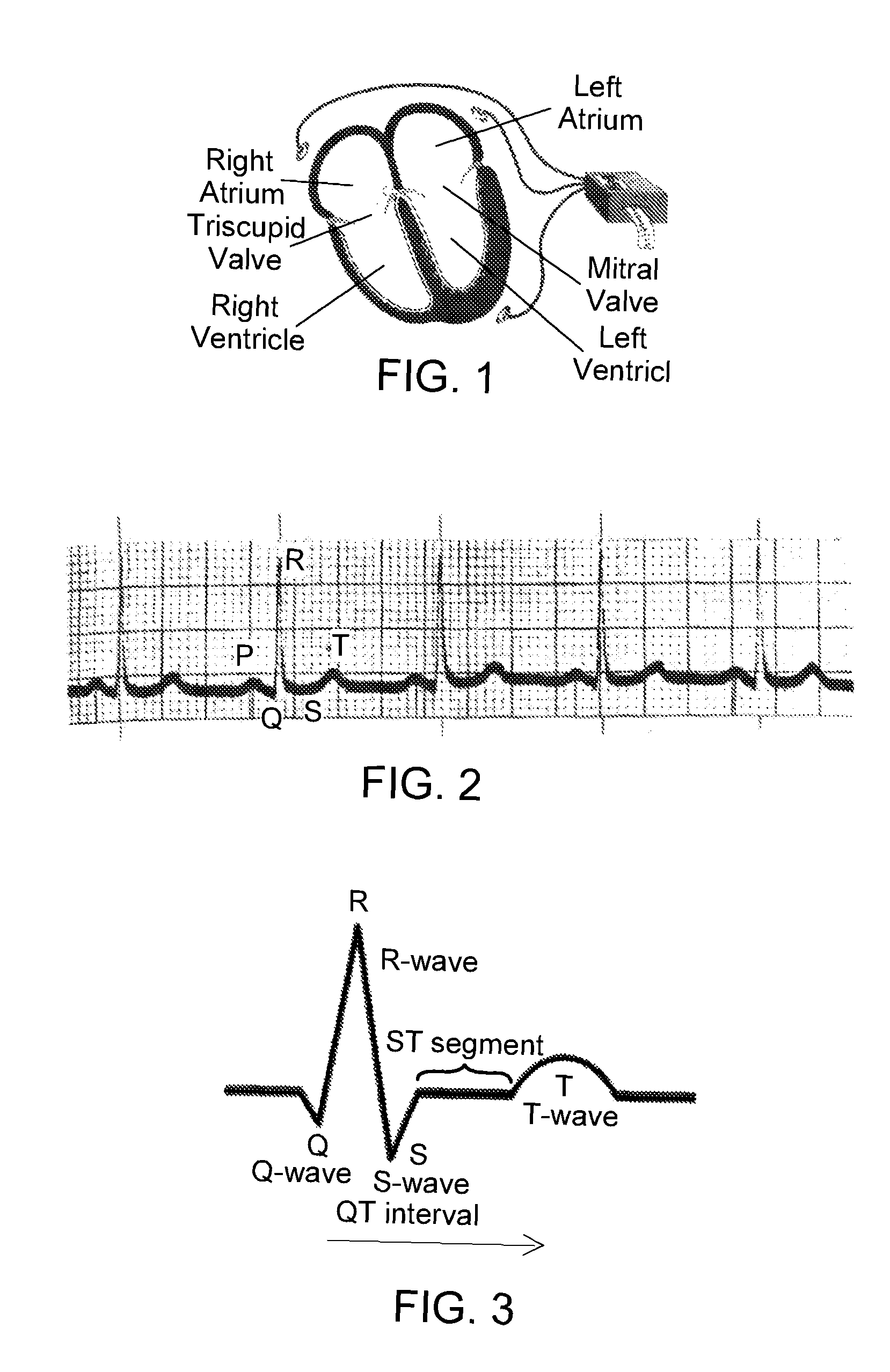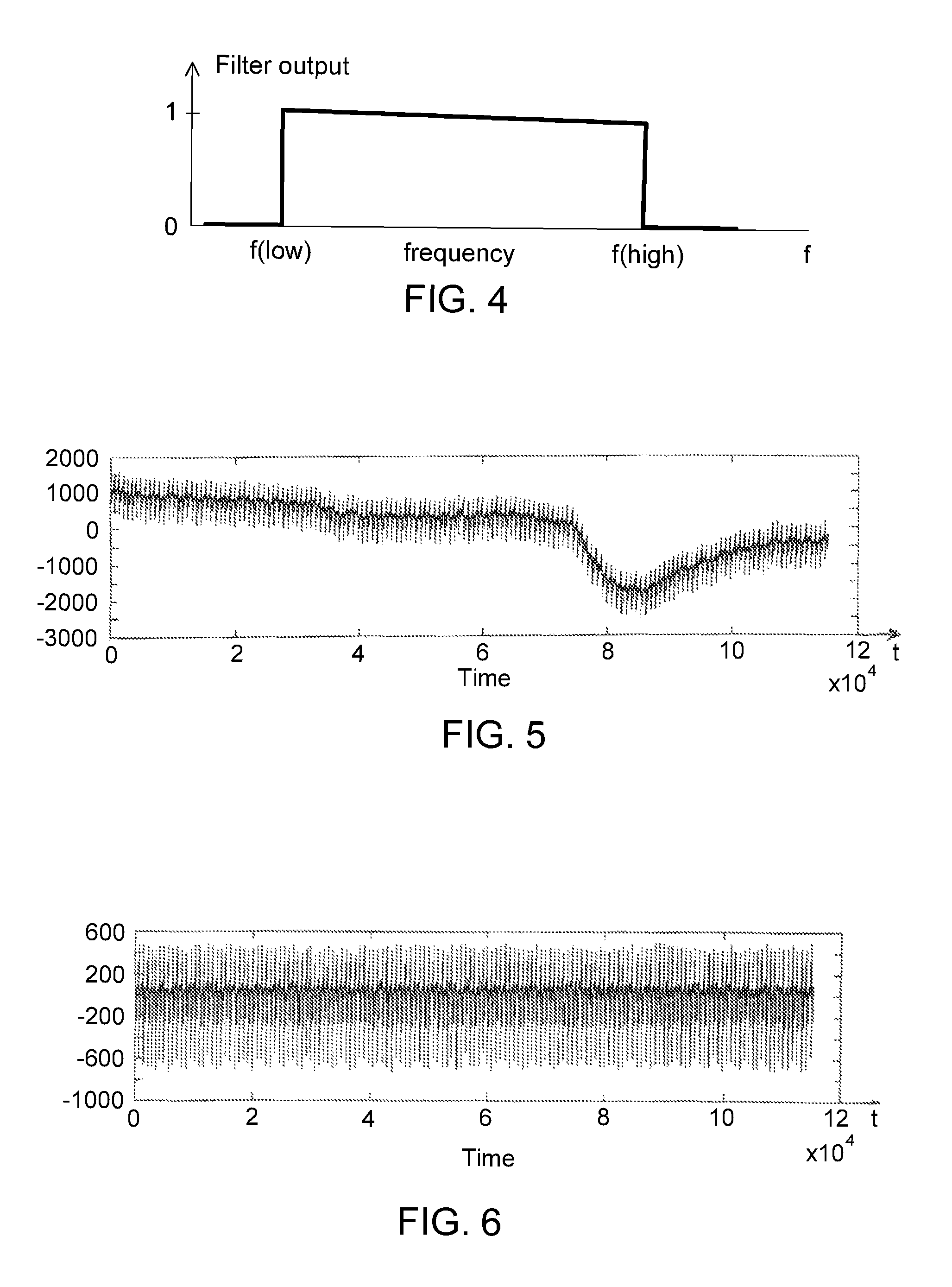Biometric subject verification based on electrocardiographic signals
a biometric subject and electrocardiographic technology, applied in the field of verification of an asserted identity of a candidate person, can solve the problems of relatively little attention, no substantial use of ecg analysis, and general limitation of ecg analysis to medical diagnostics
- Summary
- Abstract
- Description
- Claims
- Application Information
AI Technical Summary
Benefits of technology
Problems solved by technology
Method used
Image
Examples
Embodiment Construction
[0032]FIGS. 7A / 7B are a flow chart illustrating an embodiment of an enrollment phase for practicing the invention. In step 70, a counting index c is initially set equal to 0 (c(initial)=0). In step 71, the system provides or receives and stores a sequence of heart electrical action cycles (sometimes referred to as “PQRST signatures”) to create a model for a reference person whose identity is known. Preferably, each cycle covers only one PQRST heart electrical action time interval, and the cycles do not overlap, except optionally at the cycle end points. In step 72, the system forms a time dependent graph v(t;n) for each of N (N≧3) recorded heart electrical action cycles, numbered n=1, . . . , N. In step 73, the system randomly chooses a set of K of the heart cycle graphs (3≦K≦N), numbered k=1, 2, . . . , K, and compares each chosen graph v(t;k) with each other chosen graph, using a first selected, numerical-valued graph comparison metric ρ1.
[0033]In step 74 the system identifies a p...
PUM
 Login to View More
Login to View More Abstract
Description
Claims
Application Information
 Login to View More
Login to View More - R&D
- Intellectual Property
- Life Sciences
- Materials
- Tech Scout
- Unparalleled Data Quality
- Higher Quality Content
- 60% Fewer Hallucinations
Browse by: Latest US Patents, China's latest patents, Technical Efficacy Thesaurus, Application Domain, Technology Topic, Popular Technical Reports.
© 2025 PatSnap. All rights reserved.Legal|Privacy policy|Modern Slavery Act Transparency Statement|Sitemap|About US| Contact US: help@patsnap.com



